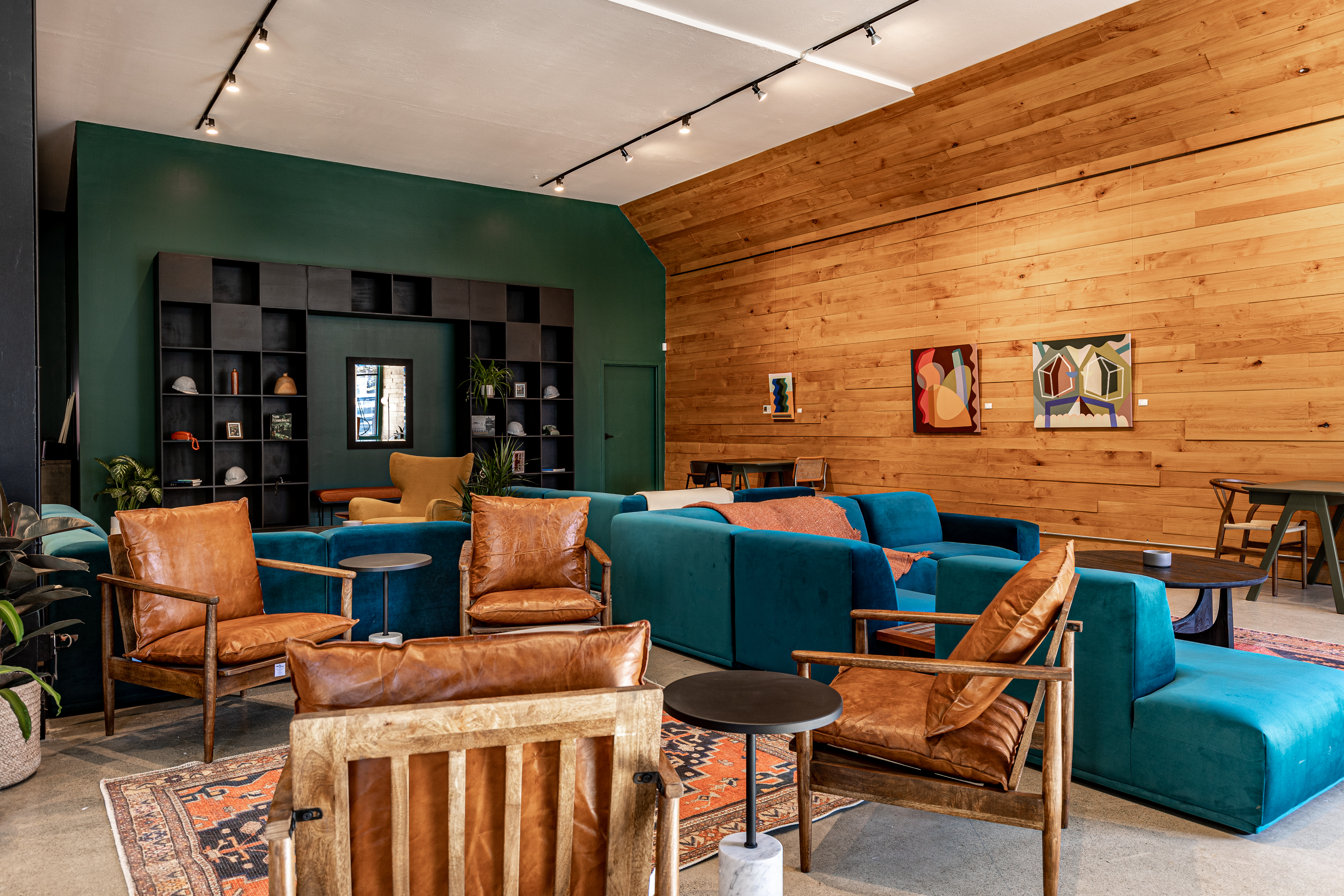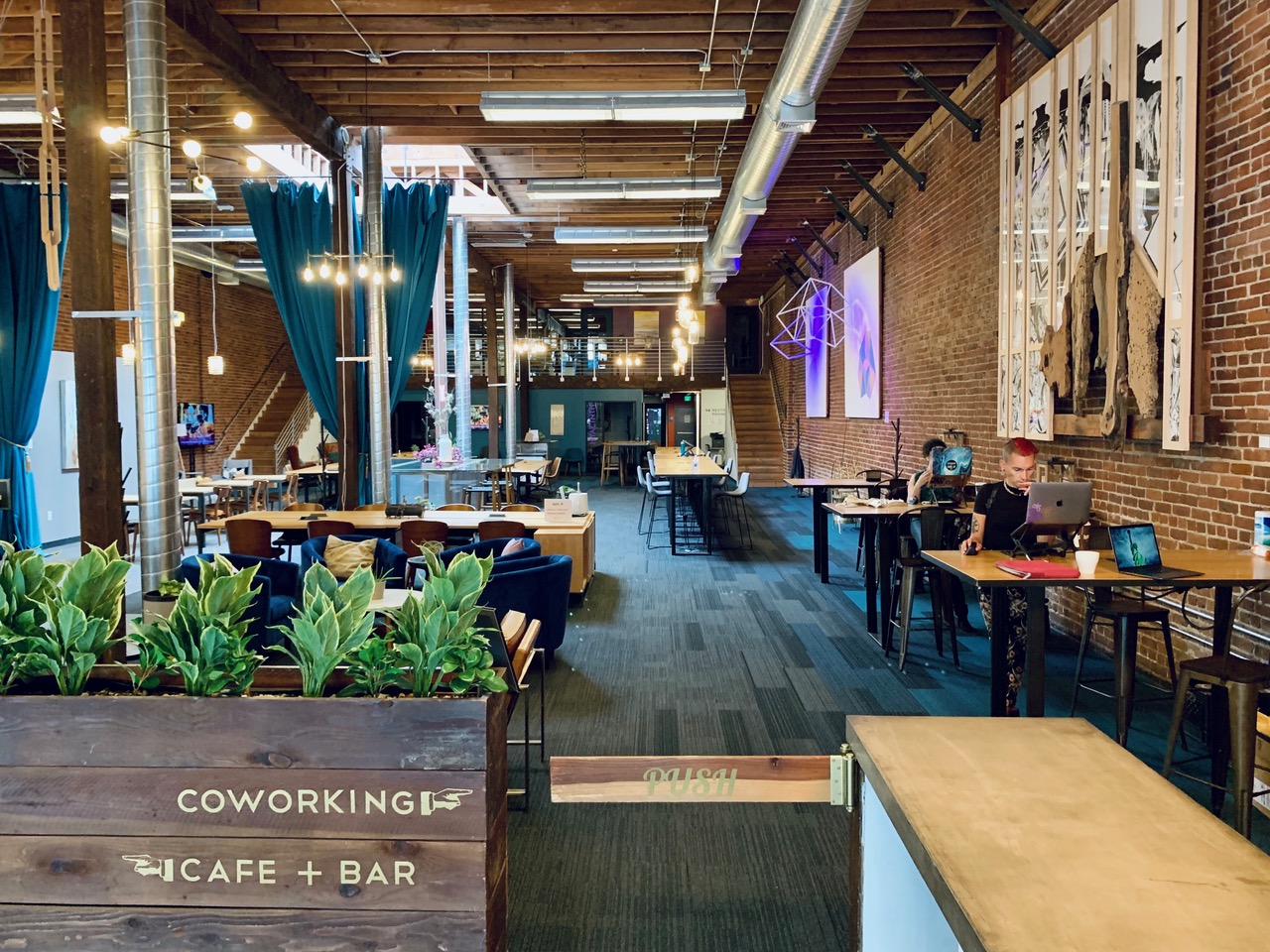
The Rise of the Not-Home Not-Office
In San Francisco, a new kind of co-working space is emerging, one that isn’t really about working at all.
When Jamie Snedden moved to San Francisco from London in late 2021, it occurred to him that he didn’t actually know how to make friends. In college, an abundance of common areas and extracurricular clubs had made it easy to meet new people. Now, working remotely for a startup, he barely left the house. He considered roving between coffee shops, but identifying potential pals there seemed as random as shooting darts. “If you don’t go to the office every day,” he said, “the world isn’t giving you many opportunities.”
So Snedden decided to build his own thing. In early 2022, he opened Groundfloor, a startup that’s part co-working space, part friendship factory. The flagship location sits on a gentrified block of San Francisco’s Mission District beside an Everlane store and a high-end yoga studio. Before the pandemic, it had been a daycare center. Now it serves more or less the same role for lonely millennials.
More than 450 people pay $200 a month to access Groundfloor’s community and its 9,000-square-foot space, which includes meeting rooms, a library and an outdoor gym. But Snedden isn’t trying to build the new WeWork. Where the last decade’s co-working companies fashioned themselves as decentralized, community-oriented answers to the modern office, Groundfloor thinks of itself as more like a college common room. Gone are the designated desks and stilted banter at the fruit-flavored water cooler. Now it’s all about conversation on couches, getting to know people over tarot cards and gathering for group yoga classes or wine tastings. And if members also happen to get some work done? More power to them.
Groundfloor isn’t the only business selling this new and improved vision of the “third space.” The startup proving grounds of San Francisco are newly filled with these not-home not-offices: There’s The Commons, a bohemian basement space where a mostly Gen Z clientele gathers to play chess, engage in one-on-one “juntos” (“singled-threaded conversations”) with other members or meditate in a designated zen room. There’s Page Street, a cafe turned co-working space for writers, where coffee is unlimited and members eat lunch together daily. Celo Center, a space for coders, recently hosted a hackathon for people experimenting with GPT-4. And Chief provides a meeting space for C-suite women who want to network or unwind. All of these spaces opened in the past year, and all of their founders believe what people really need isn’t just a place to work, but a place to gather.
As Snedden sees it, the phenomenon is inextricably linked to this post-pandemic moment. People have been cut loose from their offices and are hungry for social connections after years of isolation. Remote work made it possible to take calls and meet clients from anywhere. But for most people, forming lasting bonds over Zoom is virtually impossible.
“The problem we’re looking to solve is not a lack of workspace,” Snedden said, noting that there are only four desks available for Groundfloor’s 450 members. “It’s a lack of access to friendship.”

Despite a pandemic plunge in memberships, the co-working market has rebounded in the last two years. By early 2022, more co-working spaces had opened than had closed in the pandemic, according to a report from Upsuite, which tracks flexible workspaces. It’s not just that more remote workers are looking for office space, said Rebecca Pan, a co-founder of Trellis, a co-working space in downtown San Francisco. Instead, people are looking to meet other people.
At Trellis, which opened in 2021, memberships start at $275 a month and nonmembers can drop in for $5 an hour. There’s cafe-style seating on the first floor, along with a few armchairs, open desks and amenities like a soundproof booth for podcast recording. (People can also rent private offices, as they can with WeWork.) There are weekly happy hours and monthly member lunches; events like a Lunar New Year party or a plant-potting workshop encourage people to shut their laptops and mingle. Pan hopes that the social programming and emphasis on inclusivity makes Trellis feel more like an extension of your living room than simply a place to work. “We’re not just creating a place to get out of your house,” Pan said. “We’re creating a place you belong.”
Canopy, an older co-working company that opened its first space in 2016, has similarly tried to distinguish itself from mass-market competitors like WeWork. Canopy now operates four spaces in the Bay Area (WeWork has about 20). Each is outfitted with high-end wares like curved green couches, blond wood desks and Herman Miller office chairs. There are member events once or twice a week, ranging from talks with invited speakers to mezcal tastings.
Steve Mohebi, one of Canopy’s co-founders, suggested that co-working has reached a stage when brands have begun to proliferate and distinguish themselves. “Adam Neumann and WeWork didn't invent co-working, but they put a brand to it,” he said. He compared WeWork to a Marriott chain, whereas Canopy was more of a boutique offering, like The Mercer Hotel.
Canopy’s high-end design brings with it a higher price tag—$365 for 10 days per month, or $2,000 per month for a private office. Mohebi said the majority of revenue comes from renting out the private offices, but it is common to see those members mingling in the common area or chatting with the barista at the espresso bar. He suggested that companies that rent private office space at Canopy do so not “as a budget decision,” to save money by sharing office space, but “as a community decision,” to meet and mingle with other people.

Of course, WeWork also tried to sell the idea of community and friendship. There’s a distinct familiarity to the “Kumbaya” vibes of the new co-working startups: Neumann, the WeWork founder, also reimagined office life as relentlessly social and soaked in kombucha. The communal vibes certainly boosted WeWork’s brand, but the friendship economy couldn’t offset the soaring cost of commercial rent. (It’s also debatable that WeWork actually fostered many friendships during its heyday. An internal report from 2017 found that 69% of members had zero friends at WeWork besides their own co-workers.)
If there is one thing going for the new co-working spaces, it is the post-pandemic glut of available office space. Unlike WeWork, which was partially undone by the sky-high costs of its commercial office leases, the new co-working businesses are filling spaces few others currently want. “Office vacancy is crazy high right now,” said Pan, the Trellis co-founder. In San Francisco’s downtown, where Trellis is located, office vacancy reached a record 29.5% in the first quarter of 2023, and the city’s new vacancy tax further incentivized landlords to lure commercial tenants quickly.
Groundfloor also looked at real estate opportunistically. Its second location, which opened this March in Oakland, Calif., was a former Dollar Store; it sat vacant for nearly two years before Groundfloor moved in. “There’s this nice timing thing, where we’re perfect for lots of buildings that don’t make much sense for anyone else,” Snedden said.
Groundfloor has transformed its original location in the Mission to look like an oversize living room, with velvet couches and leather armchairs configured to maximize conversation. Members can reserve meeting rooms when they need to take a Zoom or move into the library when they need some quiet.
On a recent visit, people were sprawled out with their laptops while someone’s black-and-white dog pranced around, sniffing hands. A flier advertising an upcoming wine-and-chess night rested on a coffee table; later that evening, there would be a barre class in the wellness room. Snedden said members can join any number of events, from cacao ceremonies to morning boxing sessions to ikebana floral arranging classes. There are also dozens of member-led clubs, like a skiing group that had recently taken a field trip to Lake Tahoe. “It’s not enough to just throw people into a room together and expect them to make friends,” he said, “so we try to give people every opportunity to make a meaningful relationship.”
In the kitchen, each of Groundfloor’s members is featured in a Polaroid pinned to the wall, labeled with their name and a fun fact: “I can teach you Arabic” or “I love airports.” I noticed that almost none of them mentioned their jobs. Co-working, it seemed, was just a Trojan horse that brought people here for a higher purpose: to close their computers and start talking to each other.
Arielle Pardes covers tech culture for The Information’s Weekend section. Previously, she was a senior writer at WIRED in San Francisco.